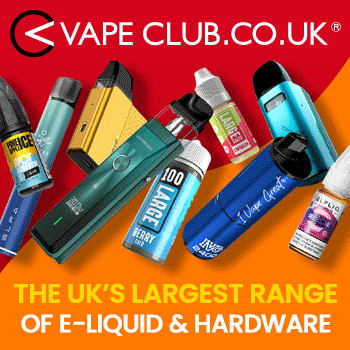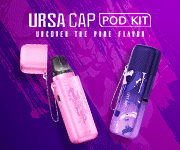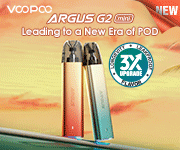TheNewsMonkey
Postman
- Joined
- Jan 8, 2013
- Messages
- 158
There has been much noise and bluster from those in favour of reclassifying electronic cigarettes as medicinal products, rather than the consumer products they are currently. Frequently, there is a strong implication that if they were reclassified as medicinal products, that regulatory framework would provide better protection for the public (in terms of safety) than the current regulations can.
So let’s examine this implication by comparing the requirements for the sale of electronic cigarettes (under the General Product Safety Directive et al) with the requirements for the sale of Nicorette products (under Directive 2001/83/EC, Medicinal Products for Human Use). Broadly speaking, a medicinal product has to tick the boxes for safety, quality and efficacy – terms which were much bandied about throughout the MHRA’s consultation into Nicotine Containing Products. Consumer products are required to be appropriately safe, of sufficiently high quality, and fit for purpose (under, for example, the Trades Descriptions Act, et al).
So could existing NRT products be sold as consumer products?
Not without some considerable changes, starting with packaging and labelling requirements. The risk phrases are pretty meaningless on medicines, with much of the important information hidden away inside on the ‘indications for use’ sheet. By contrast, the packaging and labelling requirements for consumer products (containing potentially dangerous chemicals) are very specific, and must be clearly visible on the outermost packaging, so that consumers can see them before purchasing the product. These risk and safety phrases provide very specific advice to consumers about the safe storage and use of the products.
Furthermore, consumer products containing nicotine (such as electronic cigarettes) are required to be supplied in child-resistant packaging; medicinal NRT products are not required to be supplied in child-resistant containers and, indeed, NRT products are regularly given to children at school – often without parents’ or teachers’ knowledge.http://www.planetofthevapes.co.uk/forums/#_edn1 Even very flimsy blister packs are deemed ‘child-resistant’ for medicines, despite the significant risks to children of highly toxic medications.
Medicinal NRT products are specifically indicated for use by children aged 12 to 18, despite the known toxicity of nicotine to children:
“Nicotine resin gum produced toxicity in 4 of 5 children who chewed ½ to 4 pieces. Agitation, lethargy, tachycardia, hypotension, abdominal pain, and vomiting were seen within 30 min of exposure to the gum.”[ii]
But apparently, if it’s a medicine, it doesn’t really matter about warning people about the risks:
“Many medicines will not need the addition of any warnings on the front of the pack.”[iii]
By contrast, the electronic cigarette industry has largely adopted a self-imposed age limit, restricting sales to only adults aged over 18. Indeed, we have frequently suggested that this should be a statutory requirement.
The safety of medicinal products is calculated based on a risk-benefit analysis where the risks of not treating a particular disease are weighed against the proven benefits of the proposed medicinal treatment. The benefits must be proven by scientific research studies and clinical trials. Unfortunately, this can result in some treatments being extremely dangerous, such as Champix (or Chantix). In a Public Health Advisory, the FDA required new warnings for Chantix in July 2009, since it was found to have caused thousands of incidences of suicide, suicidal ideation, violent episodes, and other devastating side effects.[iv]
Over 5 years (2006-2011), at least 150 cases of completed suicides in patients taking Chantix have been reported (along with many thousands of cases of serious adverse events). Between 2007 and 2012, not one person has died from using electronic cigarettes, nor has anyone suffered any ‘serious adverse event’, despite there now being millions of vapers all over the world. The MHRA continues to allow Champix to be prescribed to patients in the UK.
The safety of consumer products is regulated more in terms of ensuring they are as safe as they can be. Obviously, no-one is allowed to put a very dangerous product on the market, without sufficient warnings and advice. The consumer product regulations are deemed sufficient to make it appropriately safe for adult consumers to handle these potentially lethal products, because they are warned about the risks, and how to mitigate these. Consider a cigarette lighter – a small plastic container, holding a highly flammable pressurised liquid. That’s pretty dangerous, and yet consumer regulations are sufficient to allow millions of adult smokers to carry these things around in their pockets, and leave them on tables in pubs (ok, more often outside the pubs now!), without starting blazing fires wherever they go.
Medicinal products are largely exempt from environmental legislation, but consumer products are strictly regulated to minimise environmental impact, and to ensure that producers and distributors pay fees for products they bring to market, which will end up as waste products.
Medicinal NRT products are allowed to make misleading – and downright untruthful – claims concerning efficacy. For example:
“When used correctly, NICORETTE® Gum can significantly help your chances of stopping smoking successfully versus willpower alone.”[v]
This claim is in direct opposition to published research findings, including (but not limited to):
“The results showed that, for each time period, almost one-third of recent quitters reported to have relapsed. The researchers found no difference in relapse rate among those who used NRT for more than six weeks, with or without professional counselling. No difference in quitting success with use of NRT was found for either heavy or light smokers.”[vi]
There are very strict requirements in the consumer product regulations that traders must be able to provide evidence in support of claims made for electronic cigarette products.
Medicinal NRT products are not required to bear toxic hazard warning symbols and phrases, despite the fact that they contain the same toxic substance as is in eliquid – low concentration nicotine. Consumer electronic cigarette products have to include several specific risk and safety phrases, and a toxic hazard symbol of at least 1cm2.
Why is medicinal NRT deemed ‘less toxic’ than consumer electronic cigarette products, when it is exactly the same substance, at similar concentrations, to the point where consumers/patients/customers don’t even have to be warned about it?
Finally, a note about enforcement: what is needed is not a different regulatory framework for electronic cigarettes, but enforcement of the existing regulations. The burden of enforcement for electronic cigarettes as consumer products falls on Trading Standards Officers. So if they were reclassified as medicinal products, with the attendant reduction in packaging and labelling safety, who would be asked to enforce the regulations then? It would still be Trading Standards Officers, only if that were to happen, Trading Standards Officers would be swiftly overwhelmed by the inevitable emergence of a significant and unregulatable black market – with no safety standards in place.
Medicinal NRT has some way to go to get to the standards required for consumer products. Indeed, it has quite some way to go to get to the purported safety, quality and efficacy standards required for medicinal products!
Medicines regulation appears to be little more than an expensive licensing regime which has little to do with safety, quality or efficacy, if NRT is anything to go by. Why should the electronic cigarette industry lower its standards to such a level – and pay a ludicrously high price for the privilege?
http://www.planetofthevapes.co.uk/forums/#_ednref1 United Press International, (2009), Boy, 14, overdoses on nicotine gum http://www.upi.com/Top_News/2009/07/20/Boy-14-overdoses-on-nicotine-gum/UPI-79591248131144/ and
The Mirror (UK), (2009), Boy, 14, overdoses on nicotine gum given out at school http://www.mirror.co.uk/news/2009/0...tine-gum-given-out-at-school-115875-21536385/
and
The Telegraph (UK), (2013), Children as young as 12 given nicotine patches on the NHS http://www.telegraph.co.uk/health/h...-as-12-given-nicotine-patches-on-the-NHS.html
[ii] Smolinske, S.C., et al, Cigarette and Nicotine Chewing Gum Toxicity in Children, Human & Experimental Toxicology Journal, doi: 10.1177/096032718800700105 http://het.sagepub.com/content/7/1/27.short
[iii] http://www.mhra.gov.uk/home/groups/pl-a/documents/websiteresources/con157150.pdf
[iv] http://www.accessdata.fda.gov/drugsatfda_docs/label/2012/021928s028lbl.pdf
[v] http://www.nicorette.co.uk/products/gum
[vi] Harvard School of Public Health Press Release, (2012), Nicotine replacement therapies may not be effective in helping people quit smoking, Eurekalert, 2012 http://www.eurekalert.org/pub_releases/2012-01/hsop-nrt010512.php
Update From ECITA
So let’s examine this implication by comparing the requirements for the sale of electronic cigarettes (under the General Product Safety Directive et al) with the requirements for the sale of Nicorette products (under Directive 2001/83/EC, Medicinal Products for Human Use). Broadly speaking, a medicinal product has to tick the boxes for safety, quality and efficacy – terms which were much bandied about throughout the MHRA’s consultation into Nicotine Containing Products. Consumer products are required to be appropriately safe, of sufficiently high quality, and fit for purpose (under, for example, the Trades Descriptions Act, et al).
So could existing NRT products be sold as consumer products?
Not without some considerable changes, starting with packaging and labelling requirements. The risk phrases are pretty meaningless on medicines, with much of the important information hidden away inside on the ‘indications for use’ sheet. By contrast, the packaging and labelling requirements for consumer products (containing potentially dangerous chemicals) are very specific, and must be clearly visible on the outermost packaging, so that consumers can see them before purchasing the product. These risk and safety phrases provide very specific advice to consumers about the safe storage and use of the products.
Furthermore, consumer products containing nicotine (such as electronic cigarettes) are required to be supplied in child-resistant packaging; medicinal NRT products are not required to be supplied in child-resistant containers and, indeed, NRT products are regularly given to children at school – often without parents’ or teachers’ knowledge.http://www.planetofthevapes.co.uk/forums/#_edn1 Even very flimsy blister packs are deemed ‘child-resistant’ for medicines, despite the significant risks to children of highly toxic medications.
Medicinal NRT products are specifically indicated for use by children aged 12 to 18, despite the known toxicity of nicotine to children:
“Nicotine resin gum produced toxicity in 4 of 5 children who chewed ½ to 4 pieces. Agitation, lethargy, tachycardia, hypotension, abdominal pain, and vomiting were seen within 30 min of exposure to the gum.”[ii]
But apparently, if it’s a medicine, it doesn’t really matter about warning people about the risks:
“Many medicines will not need the addition of any warnings on the front of the pack.”[iii]
By contrast, the electronic cigarette industry has largely adopted a self-imposed age limit, restricting sales to only adults aged over 18. Indeed, we have frequently suggested that this should be a statutory requirement.
The safety of medicinal products is calculated based on a risk-benefit analysis where the risks of not treating a particular disease are weighed against the proven benefits of the proposed medicinal treatment. The benefits must be proven by scientific research studies and clinical trials. Unfortunately, this can result in some treatments being extremely dangerous, such as Champix (or Chantix). In a Public Health Advisory, the FDA required new warnings for Chantix in July 2009, since it was found to have caused thousands of incidences of suicide, suicidal ideation, violent episodes, and other devastating side effects.[iv]
Over 5 years (2006-2011), at least 150 cases of completed suicides in patients taking Chantix have been reported (along with many thousands of cases of serious adverse events). Between 2007 and 2012, not one person has died from using electronic cigarettes, nor has anyone suffered any ‘serious adverse event’, despite there now being millions of vapers all over the world. The MHRA continues to allow Champix to be prescribed to patients in the UK.
The safety of consumer products is regulated more in terms of ensuring they are as safe as they can be. Obviously, no-one is allowed to put a very dangerous product on the market, without sufficient warnings and advice. The consumer product regulations are deemed sufficient to make it appropriately safe for adult consumers to handle these potentially lethal products, because they are warned about the risks, and how to mitigate these. Consider a cigarette lighter – a small plastic container, holding a highly flammable pressurised liquid. That’s pretty dangerous, and yet consumer regulations are sufficient to allow millions of adult smokers to carry these things around in their pockets, and leave them on tables in pubs (ok, more often outside the pubs now!), without starting blazing fires wherever they go.
Medicinal products are largely exempt from environmental legislation, but consumer products are strictly regulated to minimise environmental impact, and to ensure that producers and distributors pay fees for products they bring to market, which will end up as waste products.
Medicinal NRT products are allowed to make misleading – and downright untruthful – claims concerning efficacy. For example:
“When used correctly, NICORETTE® Gum can significantly help your chances of stopping smoking successfully versus willpower alone.”[v]
This claim is in direct opposition to published research findings, including (but not limited to):
“The results showed that, for each time period, almost one-third of recent quitters reported to have relapsed. The researchers found no difference in relapse rate among those who used NRT for more than six weeks, with or without professional counselling. No difference in quitting success with use of NRT was found for either heavy or light smokers.”[vi]
There are very strict requirements in the consumer product regulations that traders must be able to provide evidence in support of claims made for electronic cigarette products.
Medicinal NRT products are not required to bear toxic hazard warning symbols and phrases, despite the fact that they contain the same toxic substance as is in eliquid – low concentration nicotine. Consumer electronic cigarette products have to include several specific risk and safety phrases, and a toxic hazard symbol of at least 1cm2.
Why is medicinal NRT deemed ‘less toxic’ than consumer electronic cigarette products, when it is exactly the same substance, at similar concentrations, to the point where consumers/patients/customers don’t even have to be warned about it?
Finally, a note about enforcement: what is needed is not a different regulatory framework for electronic cigarettes, but enforcement of the existing regulations. The burden of enforcement for electronic cigarettes as consumer products falls on Trading Standards Officers. So if they were reclassified as medicinal products, with the attendant reduction in packaging and labelling safety, who would be asked to enforce the regulations then? It would still be Trading Standards Officers, only if that were to happen, Trading Standards Officers would be swiftly overwhelmed by the inevitable emergence of a significant and unregulatable black market – with no safety standards in place.
Medicinal NRT has some way to go to get to the standards required for consumer products. Indeed, it has quite some way to go to get to the purported safety, quality and efficacy standards required for medicinal products!
Medicines regulation appears to be little more than an expensive licensing regime which has little to do with safety, quality or efficacy, if NRT is anything to go by. Why should the electronic cigarette industry lower its standards to such a level – and pay a ludicrously high price for the privilege?
http://www.planetofthevapes.co.uk/forums/#_ednref1 United Press International, (2009), Boy, 14, overdoses on nicotine gum http://www.upi.com/Top_News/2009/07/20/Boy-14-overdoses-on-nicotine-gum/UPI-79591248131144/ and
The Mirror (UK), (2009), Boy, 14, overdoses on nicotine gum given out at school http://www.mirror.co.uk/news/2009/0...tine-gum-given-out-at-school-115875-21536385/
and
The Telegraph (UK), (2013), Children as young as 12 given nicotine patches on the NHS http://www.telegraph.co.uk/health/h...-as-12-given-nicotine-patches-on-the-NHS.html
[ii] Smolinske, S.C., et al, Cigarette and Nicotine Chewing Gum Toxicity in Children, Human & Experimental Toxicology Journal, doi: 10.1177/096032718800700105 http://het.sagepub.com/content/7/1/27.short
[iii] http://www.mhra.gov.uk/home/groups/pl-a/documents/websiteresources/con157150.pdf
[iv] http://www.accessdata.fda.gov/drugsatfda_docs/label/2012/021928s028lbl.pdf
[v] http://www.nicorette.co.uk/products/gum
[vi] Harvard School of Public Health Press Release, (2012), Nicotine replacement therapies may not be effective in helping people quit smoking, Eurekalert, 2012 http://www.eurekalert.org/pub_releases/2012-01/hsop-nrt010512.php
Update From ECITA









